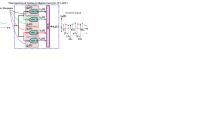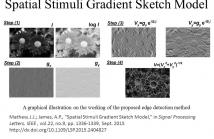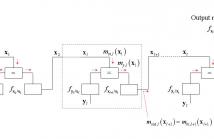- Read more about A DYNAMIC BAYESIAN NETWORK APPROACH FOR DEVICE-FREE RADIO VISION: MODELING, LEARNING AND INFERENCE FOR BODY MOTION RECOGNITION
- Log in to post comments
- Categories:
 11 Views
11 Views- Read more about Anti-sparse Representation for Continuous Function by Dual Atomic Norm with Application in OFDM
- Log in to post comments
- Categories:
 17 Views
17 Views
- Read more about Low-Complexity Digital Correction of 4-Channel Time-Interleaved ADC Frequency Response Mismatch using Adaptive I/Q Signal Processing
- Log in to post comments
Low-Complexity Digital Correction of 4-Channel Time-Interleaved ADC Frequency Response Mismatch using Adaptive I/Q Signal Processing
- Categories:
 17 Views
17 Views- Read more about GlobalSIP_slides_AEK
- Log in to post comments
This paper considers unconstrained convex optimiza- tion problems with time-varying objective functions. We propose algorithms with a discrete time-sampling scheme to find and track the solution trajectory based on prediction and correction steps, while sampling the problem data at a constant rate of 1{h, where h is the length of the sampling interval. The prediction step is derived by analyzing the iso-residual dynamics of the optimality conditions.
globalsip.pdf
- Categories:
 8 Views
8 Views
- Read more about Spatial Stimuli Gradient Sketch Model
- Log in to post comments
The inability of automated edge detection methods inspired from primal sketch models to accurately calculate object edges under the influence of pixel noise is an open problem. Extending the principles of image perception i.e. Weber-Fechner law, and Sheperd similarity law, we propose a new edge detection method and formulation that use perceived brightness and neighbourhood similarity calculations in the determination of robust object edges.
- Categories:
 33 Views
33 Views- Read more about Switched dynamic structural equation models for tracking social network topologies
- Log in to post comments
This talk focuses on dynamic inference of hidden, time-varying, and sparse social networks that facilitate the diffusion of information (e.g., viral news, or spread of consumer habits). The key novelty in this work is recognizing that the dynamics of hidden networks are sometimes driven by switching behavior between discrete (and finite) states. The advocated model tacitly accounts for switching dynamics, and a novel efficient tracking algorithm that leverages proximal gradient methods is developed.
- Categories:
 5 Views
5 Views- Read more about CRAMER-RAO LOWER BOUNDS OF JOINT DELAY-DOPPLER ESTIMATION FOR AN EXTENDED TARGET
- Log in to post comments
- Categories:
 9 Views
9 Views
- Read more about A novel solution to the filtering problem for mixed linear/nonlinear state-space models: turbo filtering
- Log in to post comments
In this manuscript the application of a factor graph approach to the filtering problem for a mixed linear/nonlinear state-space model is investigated. In particular, after developing a factor graph for the considered model, a novel approximate recursive technique for solving such a problem is derived applying the sum-product algorithm and a specific scheduling procedure for message passing to this graph.
- Categories:
 118 Views
118 Views
- Read more about Simple and Accurate Algorithms for Sinusoidal Frequency Estimation
- Log in to post comments
The problem of estimating the frequencies of sinusoidal components from a finite number of noisy discrete-time measurements has attracted a great deal of attention and still is an active research area to date, because of its wide applications in science and engineering. In this presentation, simple and accurate solutions for sinusoidal frequency estimation of 1D and 2D signals in the presence of additive white Gaussian noise are presented.
- Categories:
 793 Views
793 Views
Analyzing the performance of estimators is a typical task in signal processing. Two fundamental performance measures in the aspect of accuracy are bias and mean square error (MSE). In this presentation, we revisit a simple technique to produce the bias and MSE of an estimator that minimizes or maximizes an unconstrained differentiable cost function over a continuous space of the parameter vector under the small error conditions. This presentation is a companion work of: H. C. So, Y. T. Chan, K. C. Ho and Y.
- Categories:
 1151 Views
1151 Views